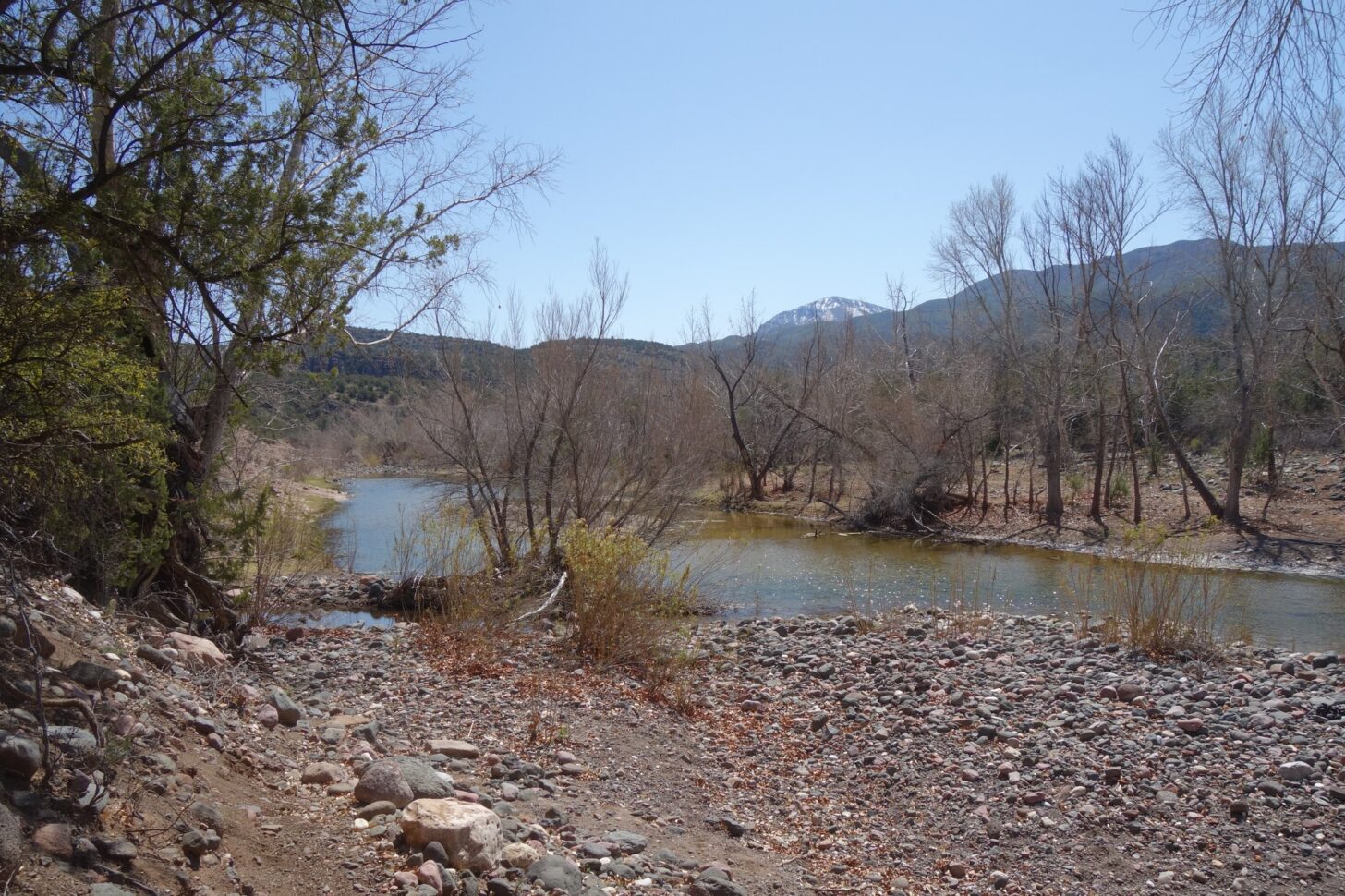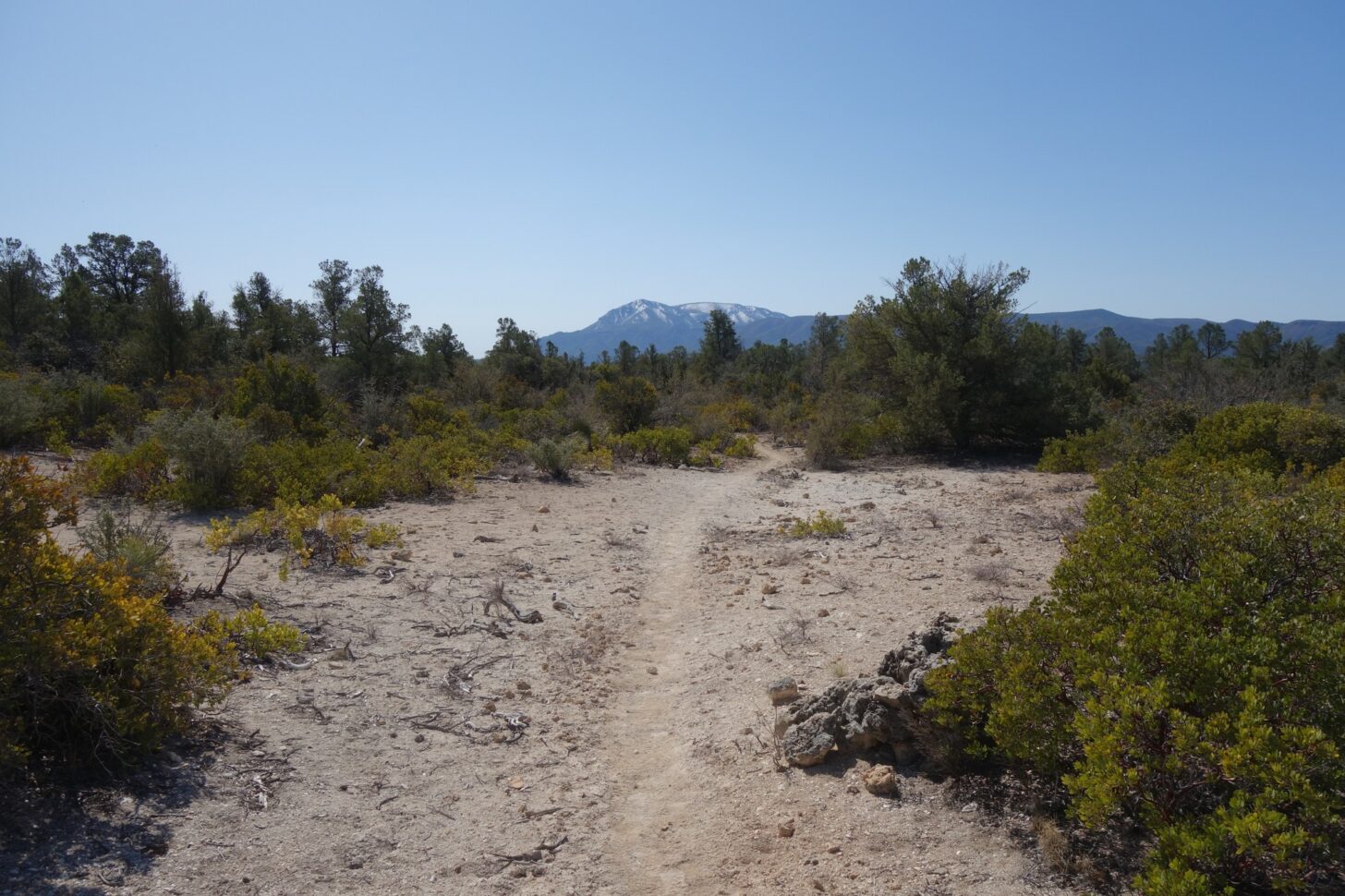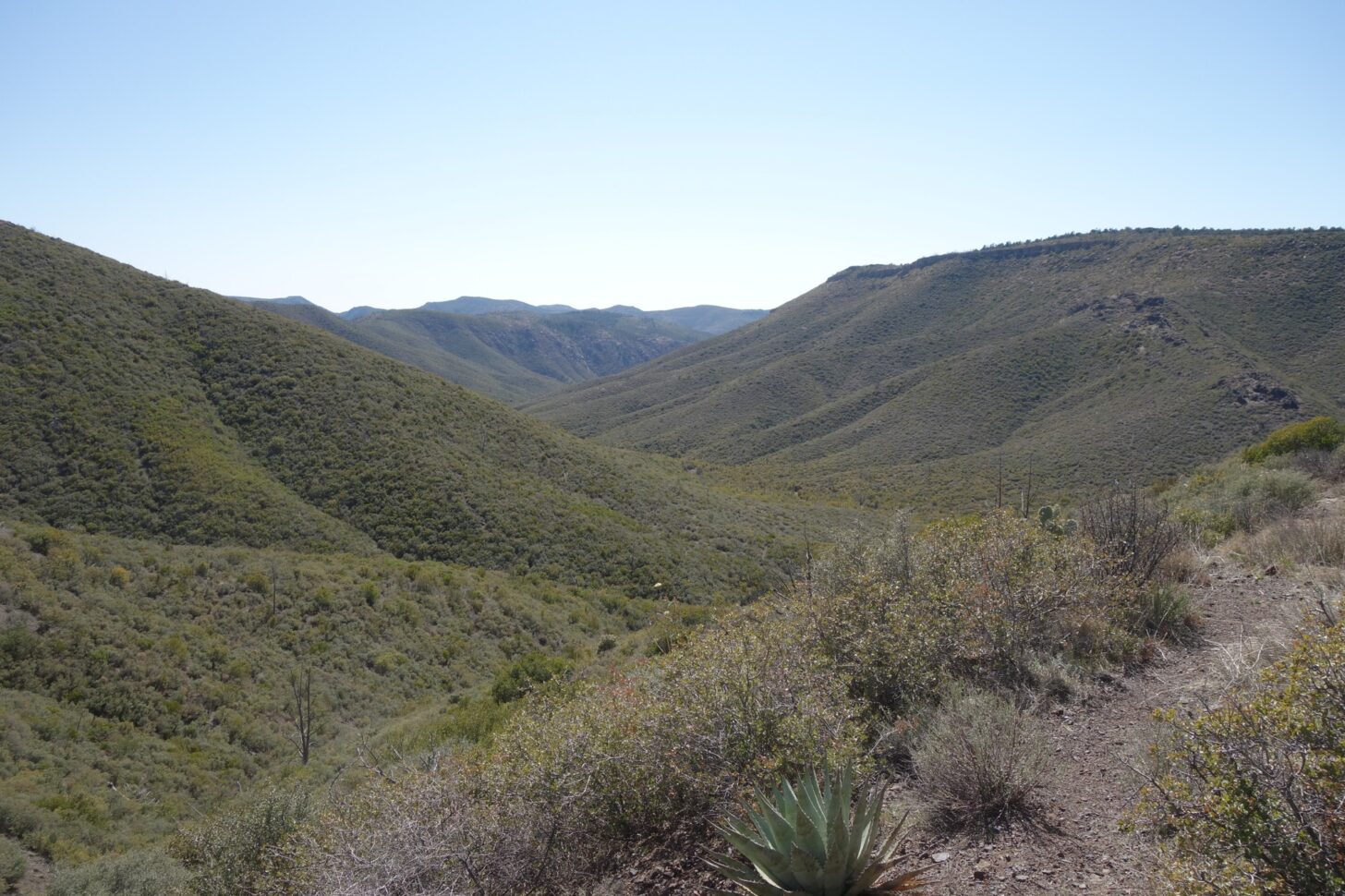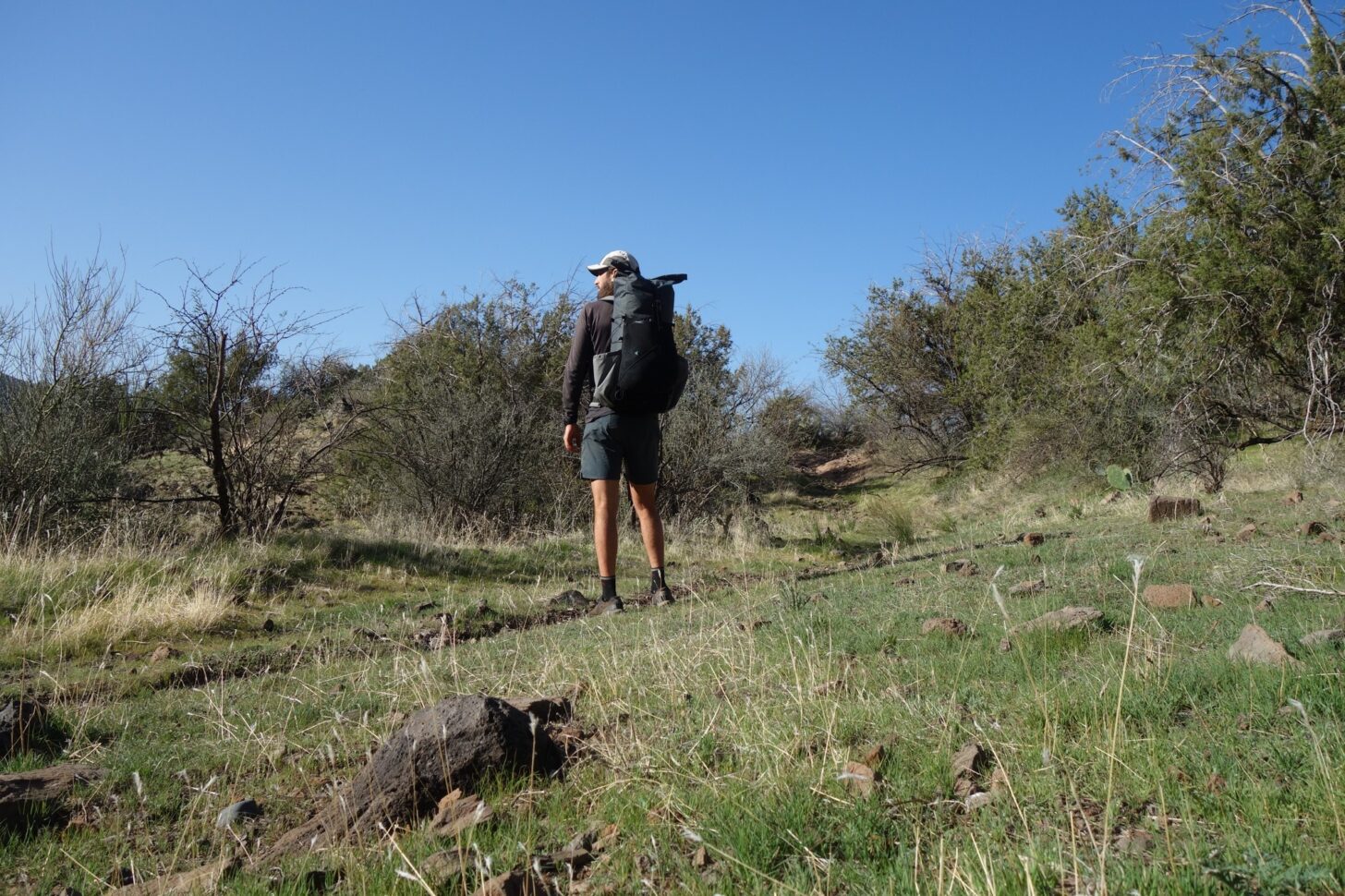There were big, round, gray stones in the East Verde River and I stepped carefully from one to the next, planting my trekking poles in the shallow water for stability. On the other side, I unclipped my hipbelt and sternum strap and swung my pack to the ground, leaning it against a round, gray rock. I looked up-canyon wondering where the water originated, for I couldn’t remember what Google Earth had told me earlier that week. Then I looked down-canyon where the water hit a brown, rocky wall, detoured around it, and then disappeared into sycamores and a long, mysterious canyon I wished I had time to explore.

Then my attention turned to the pack I was wearing. I was 11 miles into the first day of testing the YAR Gear Mountain Drifter 38 Liter pack and needed to pay attention to whether or not it was working. Suddenly aware I hadn’t spent all that much time thinking about it during those first 11 miles, I promised myself I would try and pay better attention from then on out. I hadn’t noticed undue pressure on my shoulders, hips, or back. All I really did remember from the last 11 miles were the large volcanic stones in the trail, prickly pear, agave, alligator juniper, piñon, yuccas, and countless birds. I remember the looming blue triangle of the Mazatzal Mountains dusted lightly in snow creeping slowly closer to me like one of the pyramids of Giza chained to a winch and cranked heavily across the ground. Is that how they were built? With that thought came a flood of associations. “When the great – pyramids – dragged themselves out to this spot – sickness sank into the little one’s heart,” I sang loudly, remembering the beautiful and dark Jason Molina song.

But then I realized that if the pack wasn’t stealing my attention, maybe it was doing exactly what it was supposed to be doing, just simply working, so that my attention could be freed up to experience other things, the world around me, and the associations it prompts. That’s what I think good gear should do. It should remain in the background so that we can have the experience of just being out there.
With my next source of water eight miles away and uncertain at best, I filled up my bottles from the slimy creek. I threw the pack on and with that extra weight it became noticeable, feeling like a toddler had crawled into it when I wasn’t looking. I passed several other hikers, each of them either section-hiking or thru-hiking the Arizona Trail. “Am I almost to Pine?” a young man with tan-colored everything, buzzed hair, and a roll of quadrangles in his hand jokingly moaned. “Not far!” I said enthusiastically. “I’m dying,” he responded and plodded on. He seemed to be very aware of his pack, unnoteworthy though it looked to me.
The climb was hot, and at the top I sat down in the shade of a juniper, listening to my heart pulse in my ears and feeling my temples throb. After a few minutes, I stood again and left the Arizona Trail, going west on a different, clearly unmaintained trail. After drinking some water the pack soon faded again into the background of my experience, while birdsong, sunlight, agave, manzanita, and my body moving through it all came to the fore. “There is no future – no promise of more,” I starting singing. It must have been a subconscious wish to be purely present, an incantation to banish the past, future, and the desire for something more than what is.

At some point, if I walk long enough, some ill-fitting, poorly designed, heavy backpacks become less noticeable. Conversely, most ill-fitting packs fill me with rage by mile 35 or so. A rage that instigates an obsessive problem-solving state of mind. One that tends to block out all other experiences. Over the last few years, I’ve spent more hours in this state of mind while on the trail than I’d like to admit to myself, much less to an audience.
And it’s a catch-22 as well because I need to experience different packs to find out what works, but I simply want the problem to be solved so that I can just be there. I could name all the backpacks I’ve tried and why they didn’t work, or almost worked, or mostly worked but were missing that special something that made me excited to wear them, but it’s all beside the point.
In a sense, and to sort of quote Voltaire, the perfect backpack has become the enemy of the good backpack. By which I mean, the theoretical existence of the perfect backpack has made me so aware of the good backpack that the good backpack has sometimes distracted me from the experience of backpacking.
I don’t mind this distraction to some degree, after all, it’s a part of my job, but this tension has reminded me that it is not the main reason I go backpacking. There are many reasons, too many to fully articulate here, but most can be boiled down to a reconnection with the land. So if it is the land and myself in communion that is one of the primary goals, then all I want my backpack to do is hold everything I need to facilitate that connection and to do so unobtrusively.
I descended gradually into a red granite arroyo late in the afternoon and could feel my quads. They were telling me the day should have been over by then. I stopped, leaned my trekking poles against a limber juniper bow, and pulled the map out of my shoulder strap pocket. I could see the possibility of flatness just 200 feet above me. I looked up from the map at the hill in front of me. I folded the map and stowed it away and took up my poles and began plodding slowly up the hill. This hill, though still pretty high in elevation, had the first ocotillos I had seen on this trip. I passed them panting and soon emerged on top in a beautiful grove of piñons and junipers. There was a view, a flat spot, and trees. It was perfect.
I dumped out the contents of my pack carelessly and pulled my tent from the stuff sack. When I had it set up I stepped back to take a picture. I suddenly realized that this tent is probably the only piece of gear I own that almost never steals my attention aside from the times that its clean aesthetic prompts me to take photos of it. If you must know, it’s a Mountain Laurel Designs DCF DuoMid.

I have never put much thought into my DuoMid. In my pack, it’s small enough, unobtrusive. The weight with an inner and stakes and really long guylines is just over two pounds, which is fine with me. When I’m in it I feel at home. No amount of rain or wind has really bothered me. I feel safe. Because it’s half vestibule I can spread everything out and organize it. It’s comfortable. It works. I don’t find myself pining for something else. Of course, this experience is subjective, but the point is that I found something that works for me.
My last morning in the Mazatzal Wilderness I opened both sides of the door and rolled them back and then sat with tea watching the light creep across the land from the western mountains towards me. I didn’t think about the tent, it was doing exactly what it was supposed to be doing on a morning like that: staying out of the way.

After loading everything back in my Yar Gear Mountain Drifter 38 in preparation for a 12-mile, 3500-foot climb to the trailhead, I set it against some rocks to take a few photos. The pack was still ridiculously full for the last day of the trip, I had packed at least two more days of food than I needed, and I have no idea why. “Oh well,” I thought. “It was a good test.” I set the timer on my camera, placed it on a rock, stepped back a few paces with the pack on my back, and struck a comically fake pose. My mind was not on the crisp spring morning on the edge of the Sonoran, it was on the world of the internet, where an audience would be viewing me, reading my words. I found it funny, though, suddenly laughing at myself for bringing these thoughts to this place. These worlds are so separate, and yet weirdly connected. I turned off the camera and stowed it in my shoulder strap pocket and walked away from my now vacant campsite towards the trail.

On the one hand, I want everything I own to function as well as my DuoMid so I don’t have to dissociate repeatedly from the land every time I notice an imperfection in my kit. After all, this modern dissociation from the land is the reason I return to it over and over to reconnect. But on the other hand, I want to be alright with the fact that much of my gear will never be perfect. I will have rainjackets that will fail, and sporks that are too short. I will have sleeping pads that will deflate, and, I’m sure, plenty more backpacks that will leave me wanting.
But somewhere in there, I think I can find a balance where most of my gear works so well that it doesn’t interfere with experience, and when imperfect items steal my attention I am not bothered by them. I’ll keep searching for this balance. How do you find it?
Related
Read more of Ben’s essays and gear reviews here.
Research and Discover
Find more gear info and reviews, used items in the Gear Swap, and more:
- Browse one of the brands mentioned in this essay: Mountain Laural Designs.
DISCLOSURE (Updated April 9, 2024)
- Product mentions in this article are made by the author with no compensation in return. In addition, Backpacking Light does not accept compensation or donated/discounted products in exchange for product mentions or placements in editorial coverage. Some (but not all) of the links in this review may be affiliate links. If you click on one of these links and visit one of our affiliate partners (usually a retailer site), and subsequently place an order with that retailer, we receive a commission on your entire order, which varies between 3% and 15% of the purchase price. Affiliate commissions represent less than 15% of Backpacking Light's gross revenue. More than 70% of our revenue comes from Membership Fees. So if you'd really like to support our work, don't buy gear you don't need - support our consumer advocacy work and become a Member instead. Learn more about affiliate commissions, influencer marketing, and our consumer advocacy work by reading our article Stop wasting money on gear.




Home › Forums › The Overlook: Good Gear Lets You Be Present